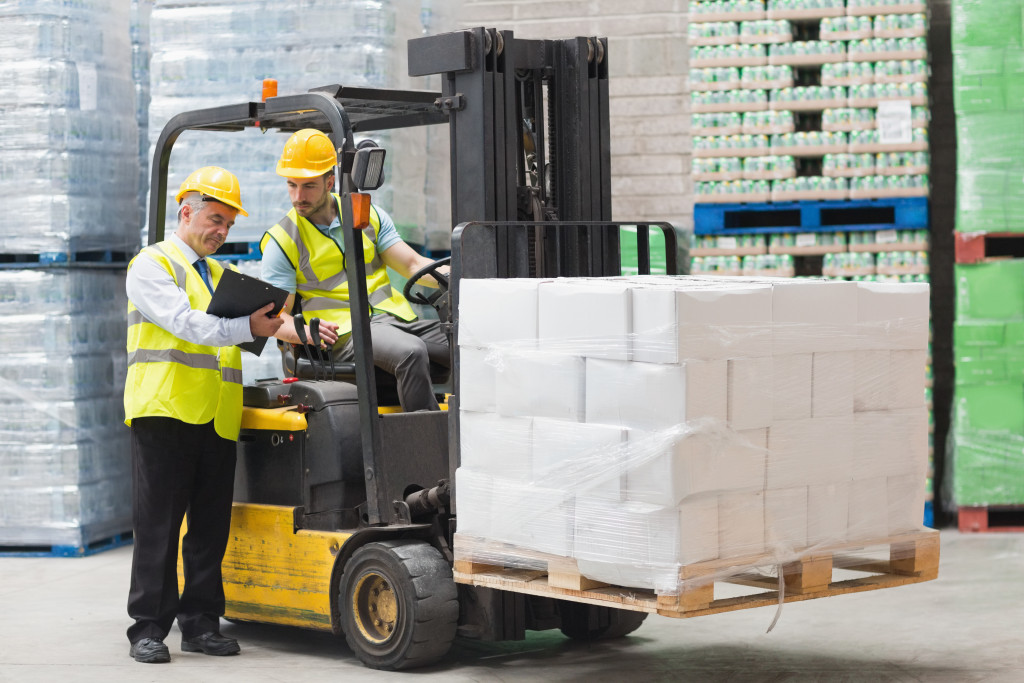- Automating distribution processes enhances efficiency by reducing errors and freeing up personnel for other tasks.
- Analytics tools facilitate tracking performance metrics, fostering data-driven decisions and process improvements.
- A Just-in-Time system reduces waste, optimizes response to demand changes, and necessitates continuous improvement.
- Optimization of warehouse strategy and partnerships with reliable carriers ensure timely, effective product delivery.
Are you tired of wasting time and money on inefficient distribution processes? Do you want to grow your business and increase your profits? If so, you’re in the right place. This blog will give you essential tips for optimizing your distribution process and growing your business. Whether you’re a small business owner or a large corporation, these tips will help you streamline your operations and succeed in today’s competitive marketplace.
Automate Your Processes
One of the best ways to optimize your distribution process is to automate your systems wherever possible. Use technology to track inventory, orders, and shipments and automate routine tasks like data entry and order processing. When you automate your processes, you save time, reduce errors, and increase efficiency. By doing so, you can free up your employees to focus on other essential tasks, like customer service and sales.
Use Analytics to Monitor Performance

To grow your business, you need to have a clear understanding of your performance. Use analytics tools to track metrics like delivery times, fulfillment rates, and customer satisfaction. You can then use this data to identify areas for improvement and make necessary changes to your processes. Additionally, analytics tools can give you insights into customer behavior and buying patterns, allowing you to make data-driven decisions about your inventory and distribution.
Implement a Just-in-Time System
If you’re looking to reduce waste and increase efficiency, consider implementing a just-in-time (JIT) system. This system ensures that you produce or acquire products only when they’re required rather than piling them up in advance. By doing so, you can reduce the cost of carrying excess inventory and minimize waste. Additionally, a JIT system helps you respond quickly to changes in demand and avoid shortages or excesses. Here are the four steps you need to take to implement a JIT system:
Identify your core products or services.
Identifying your core products or services is an essential first step in implementing a JIT system. By focusing on the most critical items, you can avoid waste and ensure that you’re always meeting customer demand.
Work closely with suppliers.
Having a partnership with reliable and responsive suppliers is crucial when implementing a JIT system. You need to have open communication channels and an understanding of each other’s processes and needs. By doing so, you can ensure a steady flow of goods without overstocking or running out of inventory.
Monitor demand closely.
To succeed with a JIT system, you need to have accurate and timely information about customer demand. Use analytics tools to monitor orders, sales, and inventory levels to determine when it’s time to produce or acquire more goods.
Continuously improve.
A JIT system requires continuous monitoring and improvement. Regularly review your processes and identify areas for improvement to keep up with changing customer demands and market trends.
With a JIT system, you can optimize your distribution process and reduce costs while meeting customer demand efficiently.
Optimize Your Warehousing Strategy

Your warehousing strategy plays a crucial role in your distribution process. Ensure that your warehouses are located strategically, allowing for easy access to main transportation routes and major shipping hubs. Additionally, optimize your storage systems to maximize your available space and reduce handling time. By doing so, you can reduce your storage costs and improve your delivery times.
You can make this process easier by using warehousing and logistics services. They can handle your storage and distribution needs, allowing you to focus on other aspects of your business. Additionally, they have the expertise and resources to help you optimize your warehousing strategy and make sure that your products are delivered efficiently.
Partner with Reliable Carriers
In order to succeed in distribution, you need to have reliable carrier partners. Choose carriers that have a proven track record of performance and deliver on their promises. Additionally, make sure that you have backup carriers in place in case your primary carrier experiences issues. By partnering with reliable carriers, you can ensure that your products are delivered on time and in good condition.
Optimizing your distribution process is not a one-and-done job; it requires constant monitoring, adjustments, and improvements. Utilizing technology for automation, implementing analytics for performance tracking, using a just-in-time system, strategizing warehousing, and partnering with reliable carriers are all essential steps in achieving greater efficiency and profitability.
Above all, it’s about being proactive and responsive to changes in market trends and customer demands. By taking these steps, you position your business for growth and success in today’s fast-paced, competitive marketplace. Remember, optimization is a journey, not a destination. Keep striving for improvement, and the results will follow.


